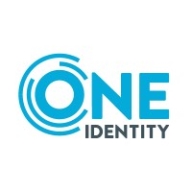

Find out in this report how the two Non-Human Identity Management (NHIM) solutions compare in terms of features, pricing, service and support, easy of deployment, and ROI.
One Identity Active Roles provides excellent reporting and auditing functionality, allowing administrators to track permissions, actions, and responsibilities effectively.
It has saved 90% of the time compared to before.
Any PAM solution, when I deploy it well and customers use it, leads to a return on investment.
One Identity's support is great.
I rate customer service and support as a seven because, although they are helpful when needed, there can be delays in responding to tickets and finding necessary fixes.
Sometimes having a fix for a bug takes too much time.
I sometimes need escalations to reach expertise.
Sometimes, I get a very helpful response and they address issues on a call.
When I have day-to-day incidents and problems, the response is good enough in terms of time and quality.
It is very beneficial for large and complex environments.
If you are a major enterprise customer, it is a matter of scaling out on resources with more memory, disk, and CPU power.
The solution is highly scalable, with a scalability rating of nine.
The scalability of One Identity Safeguard is perfect, scoring ten out of ten.
We have a cluster of SPPs and a cluster of SPSs, and we can add a node to that cluster without much fuss.
I would rate it a nine out of ten for scalability.
There were no major problems with One Identity Active Roles.
We haven't had any glitches.
I would rate the stability as a seven because there are sometimes performance issues, which require restarting the services.
I would rate it a nine out of ten for stability.
In terms of stability, I rate One Identity Safeguard nine to ten out of ten.
I encounter problems primarily with the failover procedure.
A way to connect to various directories and integrate with cloud directories would be beneficial.
Enhancements to the console are also necessary because it is more confusing than the web interface.
The user interface needs to be more modern and scalable.
For some configurations on the SPS side, if I need to make changes, such as for DNS servers, I must redeploy the machine.
There are many steps. We are still in the onboarding phase, and it seems very manual.
Another area for improvement could be the threat detection capabilities, like those seen in other PAM vendors.
It is quite expensive, costing more than 50 euros per identity.
The pricing is high.
The pricing of One Identity Active Roles is expensive, but the return on investment justifies the cost, allowing for savings in other areas.
It is one of those where the more you buy, the cheaper it is.
It is cheaper than CyberArk.
It is more expensive than Secret Server but way less expensive than CyberArk.
It's improved our security posture. It has limited access to our crown jewels, where all our identities lie within Active Directory.
It helps in removing custom Active Directory delegation, which enhances security by eliminating unnecessary privileges, addressing identity-based breaches by reducing the number of Active Directory delegations.
Dynamic groups are also one of the best features, eliminating the need to add or manage members manually.
The auditing and approval mechanisms are features we did not have before and are greatly appreciated.
I think One Identity should improve its documentation because it is vast and not clear, and clear documentation on implementing the solution would be advantageous for consultants.
Compared to other PAM solutions, it is easy to implement and use from an administrator's point of view.
| Product | Market Share (%) |
|---|---|
| One Identity Active Roles | 4.3% |
| One Identity Safeguard | 4.6% |
| Other | 91.1% |


| Company Size | Count |
|---|---|
| Small Business | 7 |
| Midsize Enterprise | 2 |
| Large Enterprise | 17 |
| Company Size | Count |
|---|---|
| Small Business | 18 |
| Midsize Enterprise | 12 |
| Large Enterprise | 19 |
One Identity Active Roles is a highly regarded solution for Active Directory (AD) security and account management. One Identity Active Roles will enhance group, account, and directory management while eradicating the need for manual processes. The end result is a significant increase in the overall speed, efficiency, and security of the organization.
Using One Identity Active Roles, users can:
Managing accounts in AD and Azure AD can be tremendously challenging; continually keeping these important systems safe and secure presents an even greater challenge. Traditional tools can be inefficient, error-prone, and very disjointed. In today’s robust marketplace, organizations are finding it somewhat difficult to keep pace with the constant access changes in a hybrid AD ecosystem. Additionally, there are significant security issues to consider (government compliance, employee status/access changes, and other confidential business requirements). And, of course, there is a requirement to properly manage Active Directory and Azure Active Directory access in addition to managing all the other numerous SaaS and non-Windows applications that organizations use today.
Users can easily automate all of these tedious, mundane administrative tasks, keeping their systems safe and error-free. Active Roles ensures users can perform their job responsibilities more effectively, more efficiently, and with minimal manual intervention. Active Roles was created with a flexible design, so organizations can easily scale to meet your organizational needs, today, tomorrow, and in the foreseeable future.
Reviews from Real Users
A PeerSpot user who is a Network Analyst at a government tells us, “It has eliminated admin tasks that were bogging down our IT department. Before we started using Active Roles, if one of our frontline staff members deleted a user or group, it could take several hours to try to reverse that mistake. Whereas now, the most our frontline staff can do is a deprovision, which just disables everything in the background, but it's still there. We can go in and have it back the way it was two minutes later. Instead of it taking two hours, it only takes two minutes.”
Becky P., Sr Business Analyst at George Washington University, shares, “In addition, with the use of workflows and the scheduled tasks, we were able to automate and centrally manage a number of the processes as well as utilize them to work around other product limitations. Those include, but are not limited to syncing larger groups, which have 50,000 plus members, to Azure AD. We sync up to Azure AD using ARS. If we had not already had ARS in place, it would have been impossible for us to have done so in the time period we did it in. We did it in under six months. ARS probably saves us at least two weeks out of every month. It's reduced our workload by 50 percent, easily.”
One Identity Safeguard manages and monitors privileged access, enhancing security with features like automatic session recording, real-time monitoring, and credential rotation. It integrates seamlessly, supports compliance with audit trails, and improves operational efficiency across organizations. This robust platform significantly bolsters security protocols while controlling sensitive operations.
We monitor all Non-Human Identity Management (NHIM) reviews to prevent fraudulent reviews and keep review quality high. We do not post reviews by company employees or direct competitors. We validate each review for authenticity via cross-reference with LinkedIn, and personal follow-up with the reviewer when necessary.